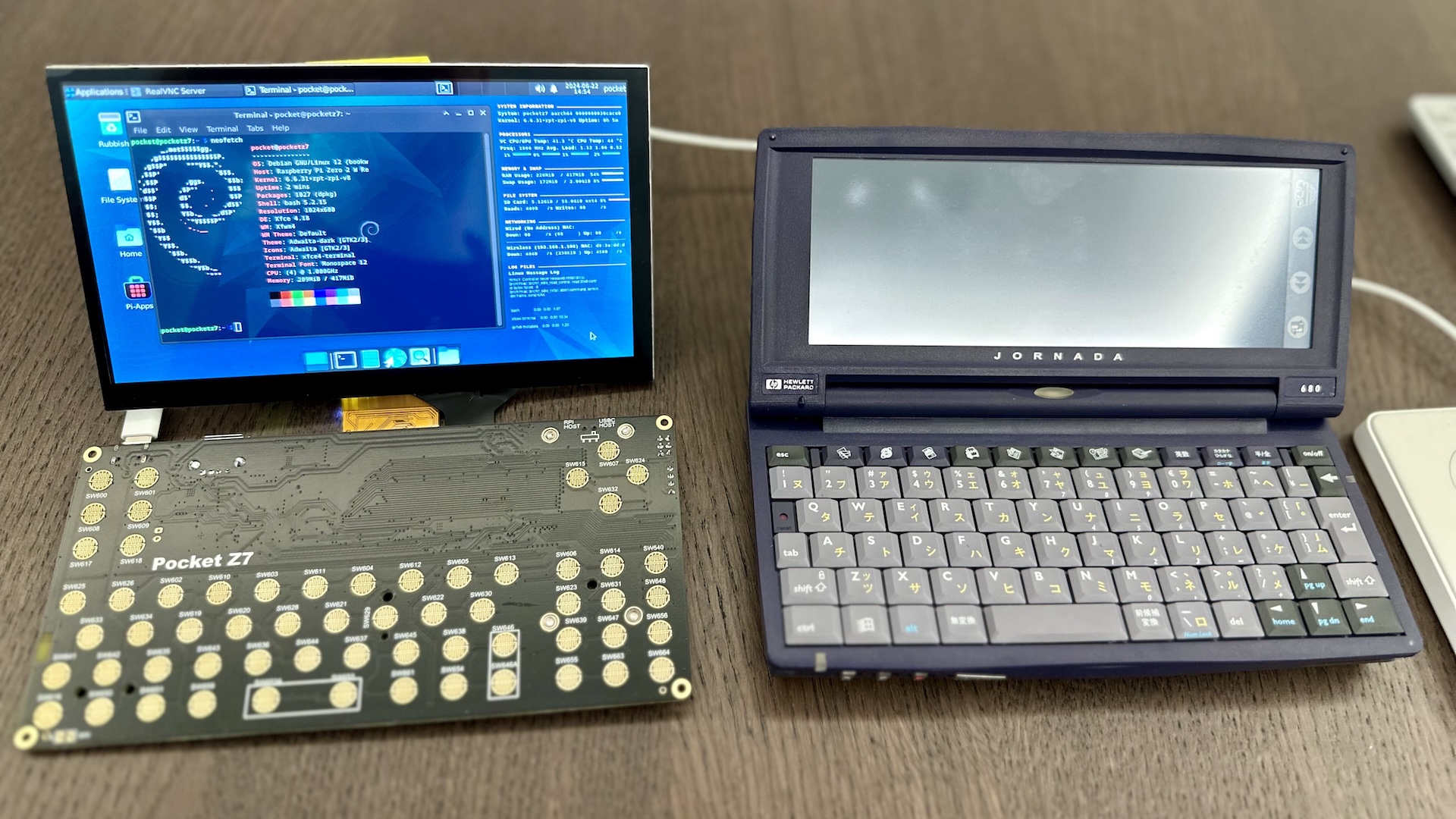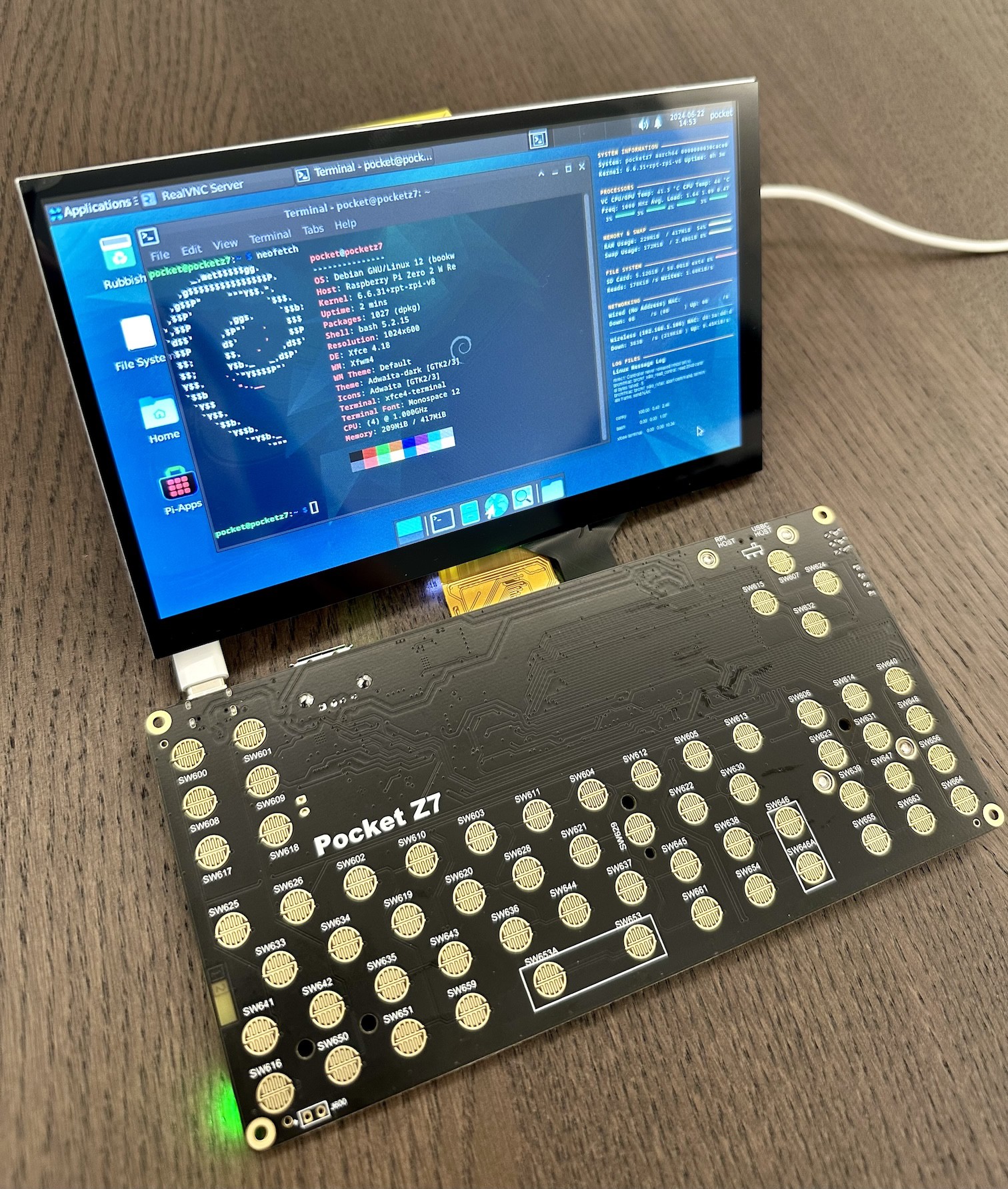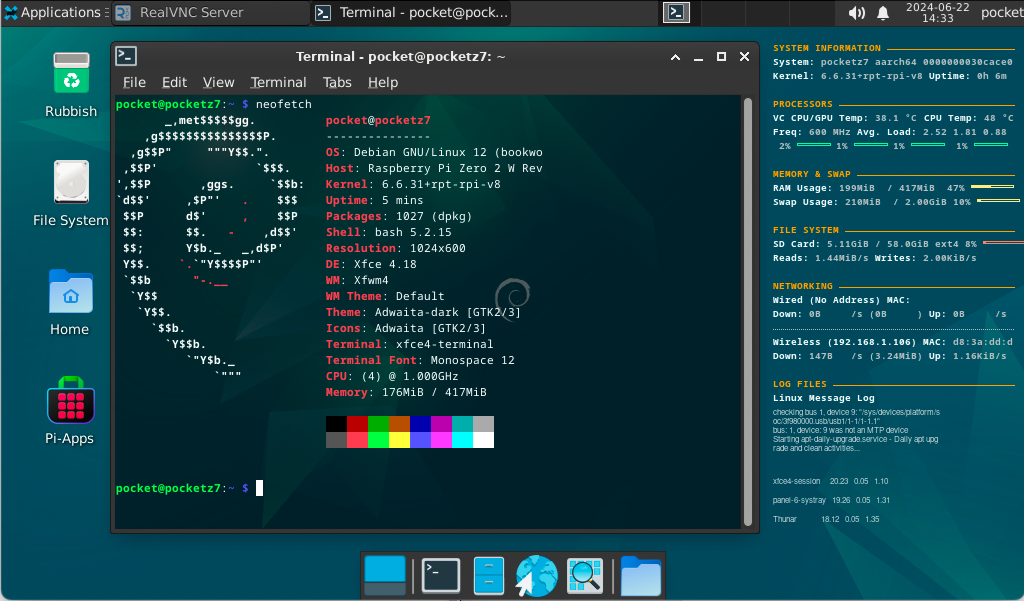
Today’s mobile computing space is dominated by smartphones, tablets, and laptop computers. One maker remembers the no-standards frontier days of mobile computers, though. Harkening back to the PalmPilot, Apple Newton, and ultra-mobile PCs (UPMCs) like the HP Jornada 720, the creator is developing the Raspberry Pi-powered Pocket Z into a UPMC for under $100.
The software engineer known as Icepat on Hackaday has a first prototype already in hand. This UPMC has a seven-inch 1024 x 600-pixel capacitive touchscreen display, and a silicone membrane keyboard, and runs Linux. Since the goal is to have a GUI, the Pocket Z runs the XFCE Desktop Environment and Conky. It’s all driven by a Raspberry Pi Zero 2 W.

To keep the cost down, Icepat connected the touchscreen display to the Pi Zero 2 W using the board’s GPIO headers. One perhaps negative effect of this is that the display uses all of the development board’s GPIO pins. There’s nothing left for sensors or additional accessories for hacking purposes.
The UPMC has a USB-C connector for the power management system and a lithium-polymer (Li-Po) battery. Icepat also added a single USB-A port for connecting accessories like a mouse, keyboard, or external storage. The Pocket Z also has its own keyboard, controlled by an Atmega32U4 microcontroller with a TI-92 keyboard layout.
Icepat was able to get the first prototype to boot into Raspberry Pi OS Lite and load the XFCE desktop environment and learned some important lessons along the way. The hope is to bring the display down to a 5-inch version, similar to a Sharp Zaurus.

Icepat also says it would be nice to develop a custom keyboard for the UPMC, but acknowledges that “Building a good keyboard is really hard and a low price point is still one of the main goals.” The project is off to a good start, though. It will be interesting to see what comes of it.



!["[T]he First and Fifth Amendments Require ICE to Provide Information About the Whereabouts of a Detained Person"](https://images.inkl.com/s3/publisher/cover/212/reason-cover.png?w=600)



